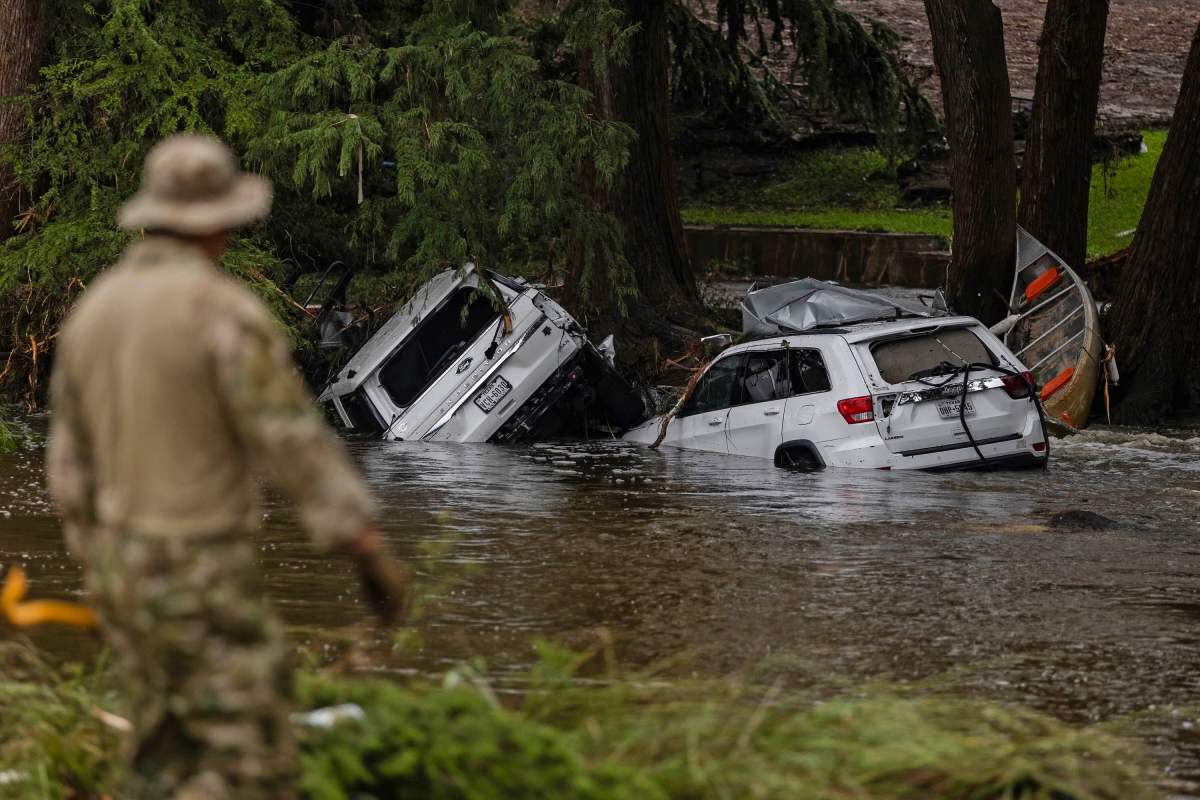Following a disaster, people often seek answers from any available source. The recent devastating floods in Texas are a prime example of this phenomenon.
There are several potential reasons why the floods in Texas resulted in such a high number of casualties, but some individuals have singled out a practice called cloud seeding as a possible cause. Specifically, they claim that a cloud-seeding startup named Rainmaker contributed to the storm’s increased rainfall. However, an examination of the data does not support this assertion.
Although it is true that Rainmaker was operating in the area a few days prior to the storm, experts have dismissed the idea that cloud seeding played a role in the floods. According to Katja Friedrich, an atmospheric scientist at the University of Colorado Boulder, “cloud seeding had nothing to do” with the floods.
The notion that cloud seeding caused the floods has been labeled a “complete conspiracy theory” by Bob Rauber, a professor of atmospheric sciences at the University of Illinois, in an interview with TechCrunch. “Somebody is looking for somebody to blame,” he said.
Cloud seeding is not a new concept, having been practiced since the 1950s, according to Rauber. The process involves injecting small particles, typically silver iodide, into clouds.
These silver iodide particles mimic the shape of ice crystals, causing super-cooled water droplets to freeze into ice when they come into contact with them. This freezing process is crucial, as Rauber explained, because ice crystals grow faster than super-cooled water drops, making them more likely to capture sufficient water vapor to become large enough to fall out of the cloud.
Only clouds containing a sufficient amount of super-cooled water are suitable candidates for cloud seeding.
In the United States, most cloud seeding occurs in the western regions during the winter months, particularly near mountain ranges. The process involves seeding clouds that form as air is pushed upwards, cools, and condenses, resulting in the release of snow that is then stored as snowpack, eventually replenishing artificial reservoirs behind dams during spring melts.
While cloud seeding has been practiced for decades, its impact on precipitation is a relatively new area of study. “We really didn’t have the technology to evaluate it until recently,” Rauber noted.
In 2017, Friedrich, Rauber, and their colleagues conducted a comprehensive study on cloud seeding in Idaho. Over the course of two hours and 10 minutes, they seeded clouds on three separate occasions, resulting in an additional 186 million gallons of precipitation.
Although this amount may seem significant, especially for drought-stricken western states, it is relatively minor compared to the massive amounts of water processed during a large storm. Idaho Power, for example, seeds clouds throughout the winter to boost water collection behind their dams, generating electricity throughout the year. “Their data shows that it’s cost-effective for them,” Rauber said.
However, in the context of a major storm like the one that caused flooding in Texas, 186 million gallons is negligible. “When we talk about that huge storm that occurred with the flooding [in Texas], we’re literally talking about the atmosphere processing trillions of gallons of water,” Rauber explained.
If Rainmaker had any influence on the storm, it would have been extremely minimal, barely registering as a rounding error. In reality, however, it had no impact whatsoever.
Firstly, Rainmaker was seeding clouds in the area days before the storm hit, and the air that was present over the area at that time had likely moved to a different location, such as Canada, by the time the storm occurred, according to Rauber.
Secondly, it is uncertain whether cloud seeding is effective in the cumulus clouds that are common in Texas during the summer. These clouds are distinct from the orographic clouds that form near mountain ranges and do not respond in the same way to cloud seeding. They tend to be short-lived and produce limited precipitation.
While cloud seeders may attempt to coax more precipitation from these clouds, the amount of rain produced is typically small, according to Rauber.
In the case of deeper, longer-lasting clouds like thunderstorms, “the natural processes are just fine,” Rauber said. “Those clouds are very efficient, and seeding them is not going to have any effect.”
Source Link





